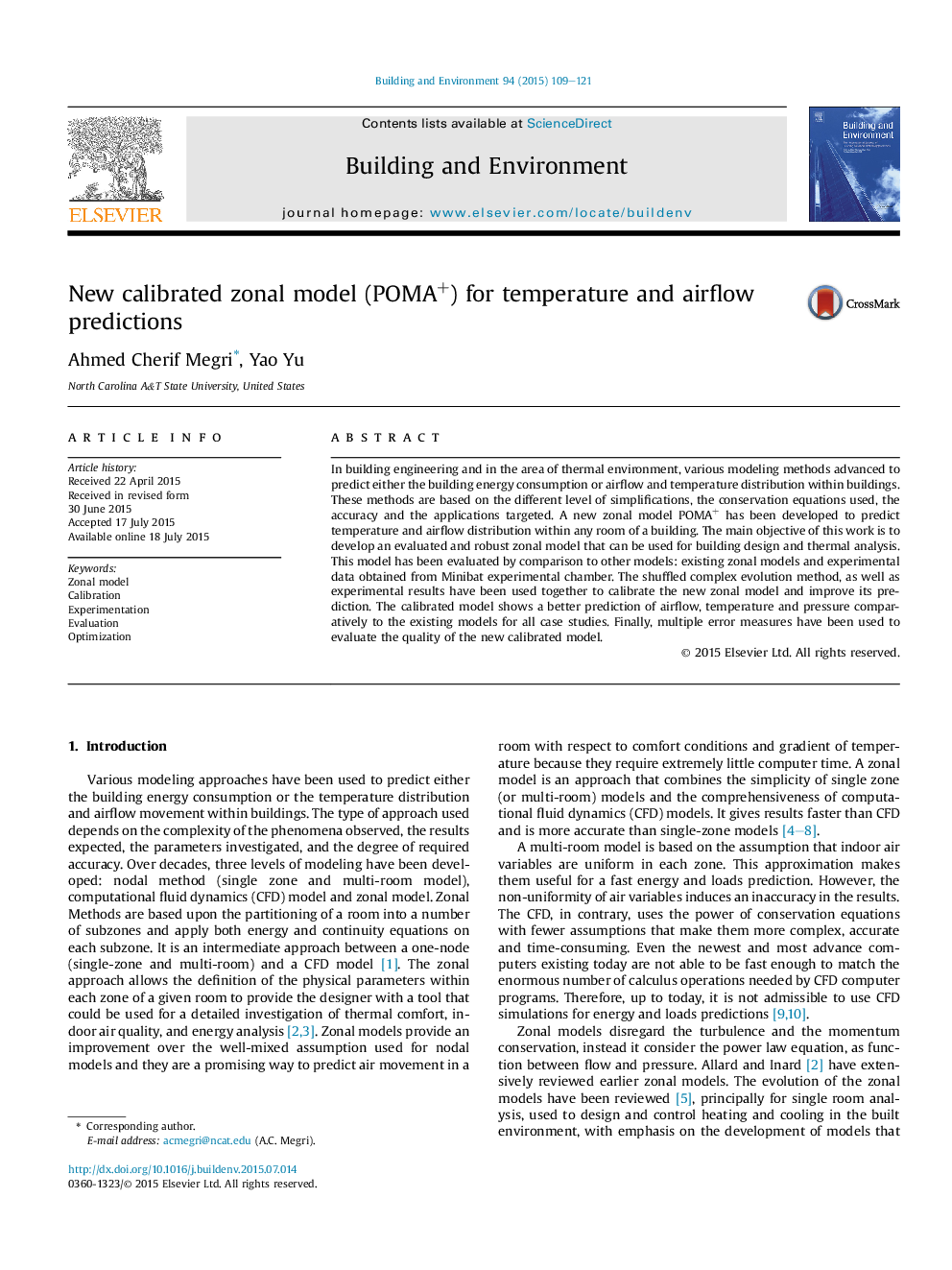| کد مقاله | کد نشریه | سال انتشار | مقاله انگلیسی | نسخه تمام متن |
|---|---|---|---|---|
| 247799 | 502528 | 2015 | 13 صفحه PDF | دانلود رایگان |

• We developed a new model called POMA+.
• The POMA+ has been integrated to an optimization and calibration method SCE – UA.
• POMA+ has been validated experimentally and through inter-program comparisons.
• The model parameters have been calibrated for a better prediction.
• The agreement between POMA+ and the experimentation has been considerably improved.
In building engineering and in the area of thermal environment, various modeling methods advanced to predict either the building energy consumption or airflow and temperature distribution within buildings. These methods are based on the different level of simplifications, the conservation equations used, the accuracy and the applications targeted. A new zonal model POMA+ has been developed to predict temperature and airflow distribution within any room of a building. The main objective of this work is to develop an evaluated and robust zonal model that can be used for building design and thermal analysis. This model has been evaluated by comparison to other models: existing zonal models and experimental data obtained from Minibat experimental chamber. The shuffled complex evolution method, as well as experimental results have been used together to calibrate the new zonal model and improve its prediction. The calibrated model shows a better prediction of airflow, temperature and pressure comparatively to the existing models for all case studies. Finally, multiple error measures have been used to evaluate the quality of the new calibrated model.
Journal: Building and Environment - Volume 94, Part 1, December 2015, Pages 109–121